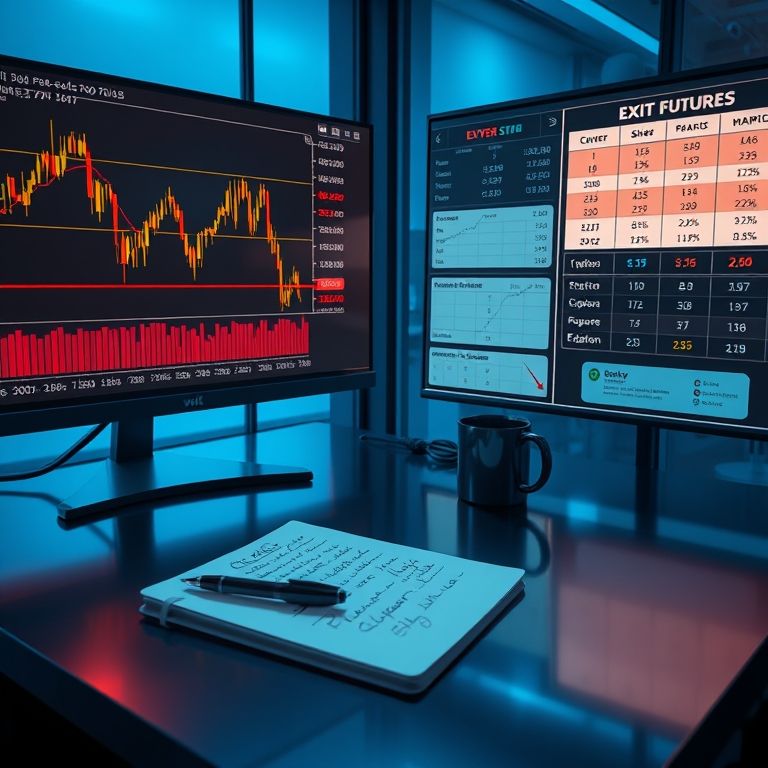When should I exit a metals futures position to limit losses?
When should I exit a metals futures position to limit losses?
Introduction:
In fast-moving metals markets, a plan for when to exit is as important as a view on direction. You can set targets, but when the price moves against you, discipline matters more than conviction. This piece blends practical exit rules with a look at how the broader Web3-enabled trading world, multi-asset playbooks, and AI tools shape the way traders manage risk and decide when to cut losses.

Key exit principles you can actually apply
- Define risk before entry: cap your loss per trade at a fixed percentage of your account (for many traders that’s 1-2%). If the position hits that threshold, you exit, regardless of how strong your conviction feels in the moment.
- Concrete price stops, not vibes: place stops at logical levels—a recent swing low, a support zone, or a volatility-based number like a multiple of the ATR. This anchors liquidation to market structure rather than wishful thinking.
- Use trailing stops to breathe with momentum: once a trade moves in your favor, let a trailing stop lock in gains while giving the trade room to run. It’s a way to avoid both stingy exits and whipsaw recovery when the market reverses quickly.
- Consider liquidity and slippage: futures liquidity varies by contract and time. If liquidity thins near major sessions or around news, plain stops may not execute at the intended price. In those moments, you may tighten risk or reduce position size rather than chase fills.
- Time windows matter: not all losses need to be permanent. If you’ve defined a scenario where the premise hasn’t materialized after a set period, an exit can preserve capital for the next setup.
- Size and leverage discipline: don’t let leverage magnify bad exits. Keep position sizing aligned with your risk budget so a single error doesn’t blow up the whole day.
Important notes from a cross-asset perspective
- Across assets (forex, stocks, crypto, indices, options, commodities), exit discipline remains universal: preserve capital first, then seek opportunity. A diverse toolkit reduces the impact of a single misread.
- Leverage is a double-edged sword: it magnifies moves but also speeds up drawdowns. A measured approach—smaller lots, more frequent risk checks—often saves more capital over time than chasing bigger bets.
- Chart analysis tools help but don’t replace judgment: ATR-based stops, volatility bands, and correlation checks provide guardrails, yet you still need a plan for unexpected regime shifts.
Web3, reliability, and leverage considerations
- DeFi and multi-asset access bring new liquidity and hedging primitives, but also new risks: smart contract risk, oracles, and flash-liquidation dynamics can alter outcomes around exits.
- Leverage in modern platforms often comes with automated risk controls. Embrace these tools (e.g., automated stop triggers, portfolio-level risk caps) while keeping manual oversight “in the loop” for big market swings.
- Charting and on-chain data enable faster decision support. Use it to validate exit levels or detect regime changes that could require early trimming.
Future trajectory: smart contracts, AI, and a changing landscape
- Smart contracts promise transparent, rules-bound exits and automated risk management, but they require robust auditing and awareness of gas costs and execution delays.
- AI-driven trading can spot subtle patterns in volatility and liquidity, suggesting optimal exit timings or dynamic stop placements. The caveat remains: models need ongoing validation and human oversight.
- The broader trend points to more integrated risk frameworks that blend traditional risk management with on-chain data, while staying mindful of operational and security risks.
Slogans to keep in mind
- Exit with control, not with regret.
- Cut losses clean, let profits ride.
- Smart exits, steadier capital, sharper setups.
Closing thought
When you ask, “When should I exit a metals futures position to limit losses?” the best answer blends pre-defined risk, disciplined execution, and a readiness to adapt as markets evolve—whether you’re trading the classic metal pits or exploring the next-gen toolkit of Web3 and AI-enabled trading.
YOU MAY ALSO LIKE




